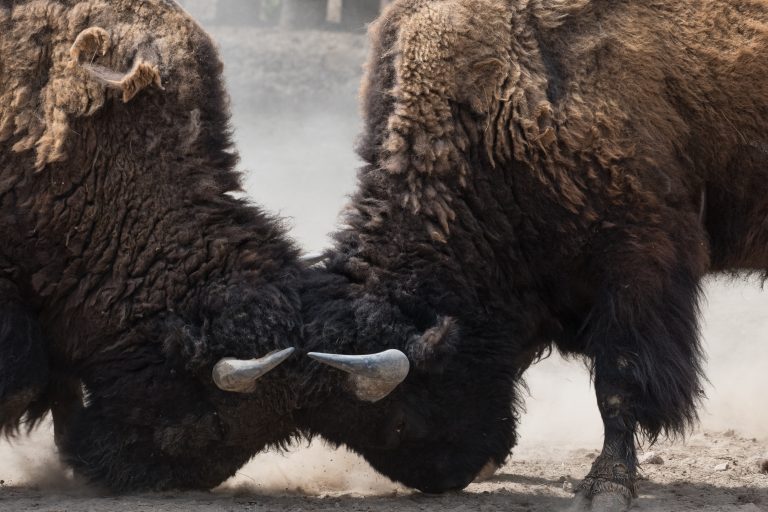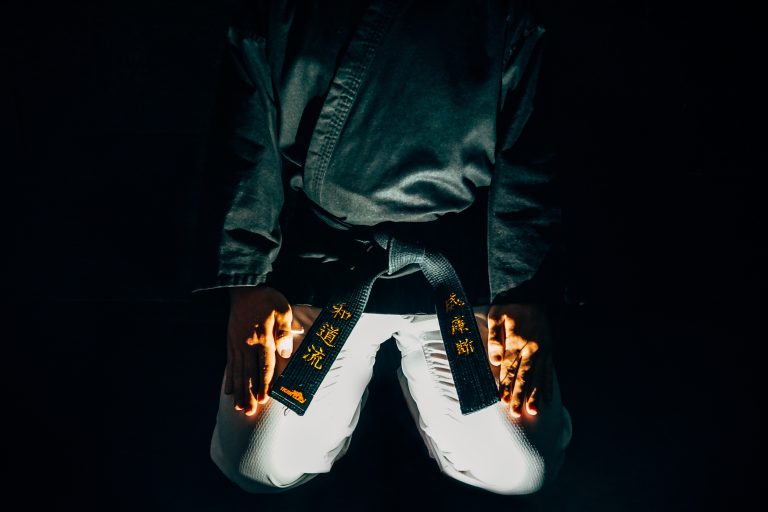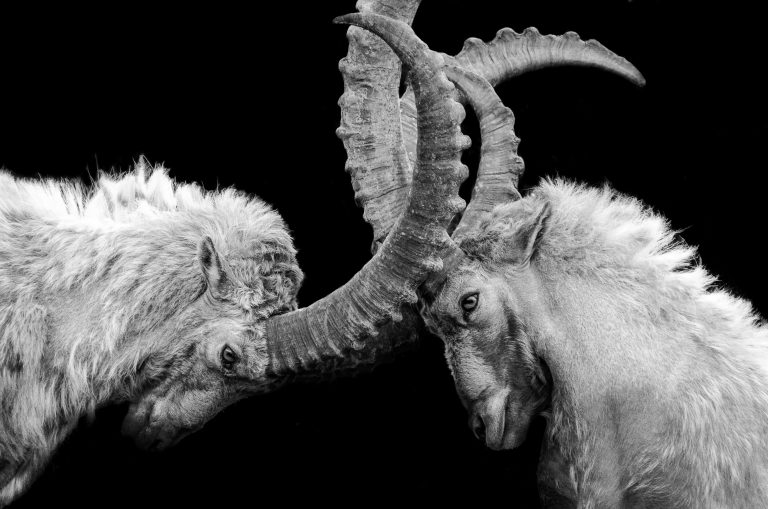What is the Order of Karate Belts?
Karate is a popular martial art that is known around the world. It is a discipline that requires focus, dedication, and hard work to master. When practitioners of karate begin their journey, they wear a white belt. However, this is just the beginning of their journey as they continue to improve their skills and progress through different belt colors. In this blog post, we’re going to explore what the different belt colors mean and what order they are typically ranked in.
What is the Purpose of Karate Belts?
Karate belts are used to signify a student’s level of expertise and experience in the art form. Each belt color represents a certain set of skills, techniques, and knowledge that the practitioner has gained since beginning their training. Karate is a martial art that emphasizes the growth and development of the individual, and the ranking system of belts is just one way to measure that progress.
What is the Order of Karate Belts?
The order of karate belts varies depending on the martial arts school or organization, but the most common progression is as follows:
1. White Belt
2. Yellow Belt
3. Orange Belt
4. Green Belt
5. Blue Belt
6. Purple Belt
7. Brown Belt
8. Black Belt
What Do The Different Karate Belt Colors Mean?
Each belt color represents a certain level of proficiency and skill, as well as certain character traits that the practitioner should embody. Here is a breakdown of what each belt color typically represents:
White Belt:
The white belt is the starting point for all karate students. This belt color represents purity and the beginning of the student’s journey to learn karate. They are essentially blank slates, learning the basics of karate and gaining an understanding of the discipline.
Yellow Belt:
The yellow belt represents the first step in the student’s progression. This color represents the sun rising and the student’s new journey to a higher level of knowledge. Their techniques have improved, and they have gained more knowledge about the principles of karate.
Orange Belt:
The orange belt represents the growing light of dawn, where the sun is beginning to illuminate more of the student’s path. The student should be able to perform more complex techniques than when they were a yellow belt.
Green Belt:
The green belt represents a period of growth for the student. The strength and power of their karate techniques should be improving, and they should be able to perform moves with greater precision and finesse.
Blue Belt:
The blue belt represents the blue sky overhead as the student continues to make progress towards becoming a black belt. The student should be mastering their techniques and be on the path to becoming a black belt.
Purple Belt:
The purple belt represents the perfection of the student’s techniques. They have honed their skills, and their mastery of karate has become more effortless.
Brown Belt:
The brown belt represents the beginning of the student’s transition to become a black belt. The student has gained a strong foundation of knowledge and skill but still has room to grow.
Black Belt:
The black belt is the highest-ranking belt in karate. It represents mastery, excellence, and a high level of skill. The black belt is not the end of the journey, but the beginning of a new chapter in the student’s life as a master in karate.
Understanding Karate Belts: Frequently Asked Questions
Karate is a martial art that originated in Okinawa, Japan, in the late 19th century. It involves the use of striking, kicking, and blocking techniques to defend oneself. One of the most distinguishing features of karate is the ranking system that uses belts as a symbol of progress and skill level. Here are some frequently asked questions about karate belts in order:
What are the different karate belt colors?
Karate has a specific ranking system that uses different colors to signify the level of proficiency attained by a practitioner. In general, the colors progress from white to black, with various shades of brown, yellow, green, and blue in between. The standard order of colors in karate belts from the lowest to the highest are:
- White Belt
- Yellow Belt
- Green Belt
- Blue Belt
- Brown Belt (1st to 3rd kyu)
- Black Belt (1st to 10th dan)
It’s important to note that the specific order of belt colors may vary depending on the style of karate being practiced.
What is the significance of the white belt?
The white belt is the starting point for all karate practitioners. It symbolizes purity, innocence, and a beginner’s mind. This is where the journey begins, as a student learns the basics of karate and begins to develop mental and physical strength.
What does a yellow belt signify?
A yellow belt signifies that a student has learned the basic techniques of karate and has gained a basic understanding of the art form. They are now ready to take on more advanced techniques and continue their journey towards becoming a black belt.
What does a black belt represent?
A black belt represents the highest level of achievement in karate. It is a symbol of mastery and expertise, attained only through years of dedicated practice and hard work. However, it’s important to note that even after attaining a black belt, the journey does not end, and a practitioner continues to learn and grow.
What is the process to earn a black belt?
Earning a black belt in karate is a long and challenging journey that requires dedication, discipline, and hard work. The process typically involves years of training, testing, and evaluation, as well as the completion of specific requirements set by the practitioner’s dojo. Each level of proficiency requires the candidate to pass an exam in front of a panel of judges to move up to the next level.
What is the difference between kyu and dan ranks?
In karate, there are two types of ranks: kyu ranks and dan ranks. Kyu ranks are beginner and intermediate level ranks, represented by colored belts, while dan ranks are advanced ranks, represented by black belts. The kyu ranks are numbered from 10th kyu (white belt) to 1st kyu (brown belt). The dan ranks are numbered from 1st dan (shodan) to 10th dan.
How long does it take to earn a black belt in karate?
The time it takes to earn a black belt in karate varies depending on the style being practiced, as well as the individual’s dedication and discipline. In general, it takes several years of consistent training to earn a black belt, with some styles requiring longer periods of time.
Can a black belt be revoked?
It is possible for a black belt to be revoked if the practitioner engages in behavior that violates the ethical standards of the karate community or if they fail to maintain their skills and proficiency. Revocation is rarely done and only occurs in extreme cases.
Are there any age restrictions for earning a black belt?
Karate is an art form that can be practiced by people of all ages. There are no specific age restrictions for earning a black belt, as attainment is based on proficiency and dedication. However, the process may take longer for older practitioners due to physical limitations.
What are Karate Belts in Order?
Karate is a martial art that has a grading system based on different colored belts. The karate belt system is a way for students to mark their progress in the art, as they move from beginner to advanced stages. Understanding the order of karate belts is crucial to any karate student’s journey towards mastery. Here is a step-by-step guide that includes everything you need to know about karate belts in order.
Step 1: White Belt
The white belt is the starting point for all students entering the world of karate. It represents the beginning of the journey towards becoming a black belt. During this stage, students are taught the basics of karate, such as stances, strikes, and kicks. At this level, students focus on building their foundation and understanding the principles of karate.
Step 2: Yellow Belt
The yellow belt is the first level of advancement in karate. It signifies that a student has learned the basics and is ready to move on to more advanced techniques. At this level, students are introduced to additional strikes, stance variations, and combinations. Students must display good form and technique to progress to the next level.
Step 3: Orange Belt
The orange belt represents a deeper understanding and commitment to the art of karate. Students at this level start to develop their own style and approach to karate. Orange belt students are expected to perform more complex techniques and demonstrate an increased level of physical fitness and mental discipline.
Step 4: Green Belt
The green belt represents a significant step forward in a student’s karate journey. At this level, students have a good understanding of the technical aspects of karate, and their focus shifts towards the mental and spiritual aspects of the art. Green belt students are expected to display a higher level of proficiency in their movements and techniques.
Step 5: Blue Belt
The blue belt signifies a high level of proficiency and skill in karate. Students at this level are considered to be advanced and are expected to start teaching other students below their rank. This belt symbolizes a student’s mastery of basic techniques, and the ability to execute advanced techniques with ease.
Step 6: Purple Belt
The purple belt is a significant milestone in a student’s karate journey. At this point, students have gained a deep understanding of the art and its philosophies. Purple belt students are expected to teach and mentor lower-ranked students, and their focus shifts towards perfecting their techniques and exploring more advanced concepts.
Step 7: Brown Belt
The brown belt represents a high level of proficiency and dedication to the art of karate. At this level, students have honed their techniques and have begun to develop their own unique style. Brown belt students are expected to be mentors and leaders within their karate community.
Step 8: Black Belt
The black belt is the ultimate goal of any karate student. It represents a deep understanding and mastery of the art. Black belt students are expected to be role models and leaders within their karate community. The journey towards a black belt is long and challenging, but the rewards are well worth the effort.
Conclusion
Karate belts represent a student’s progress and commitment to the art. Each belt in the karate system has its unique significance and challenges. By focusing on each step of the journey, students can make steady progress towards mastery. Understanding the karate belt system and the order of belts is crucial for any aspiring karateka.
Inhaltsverzeichnis






